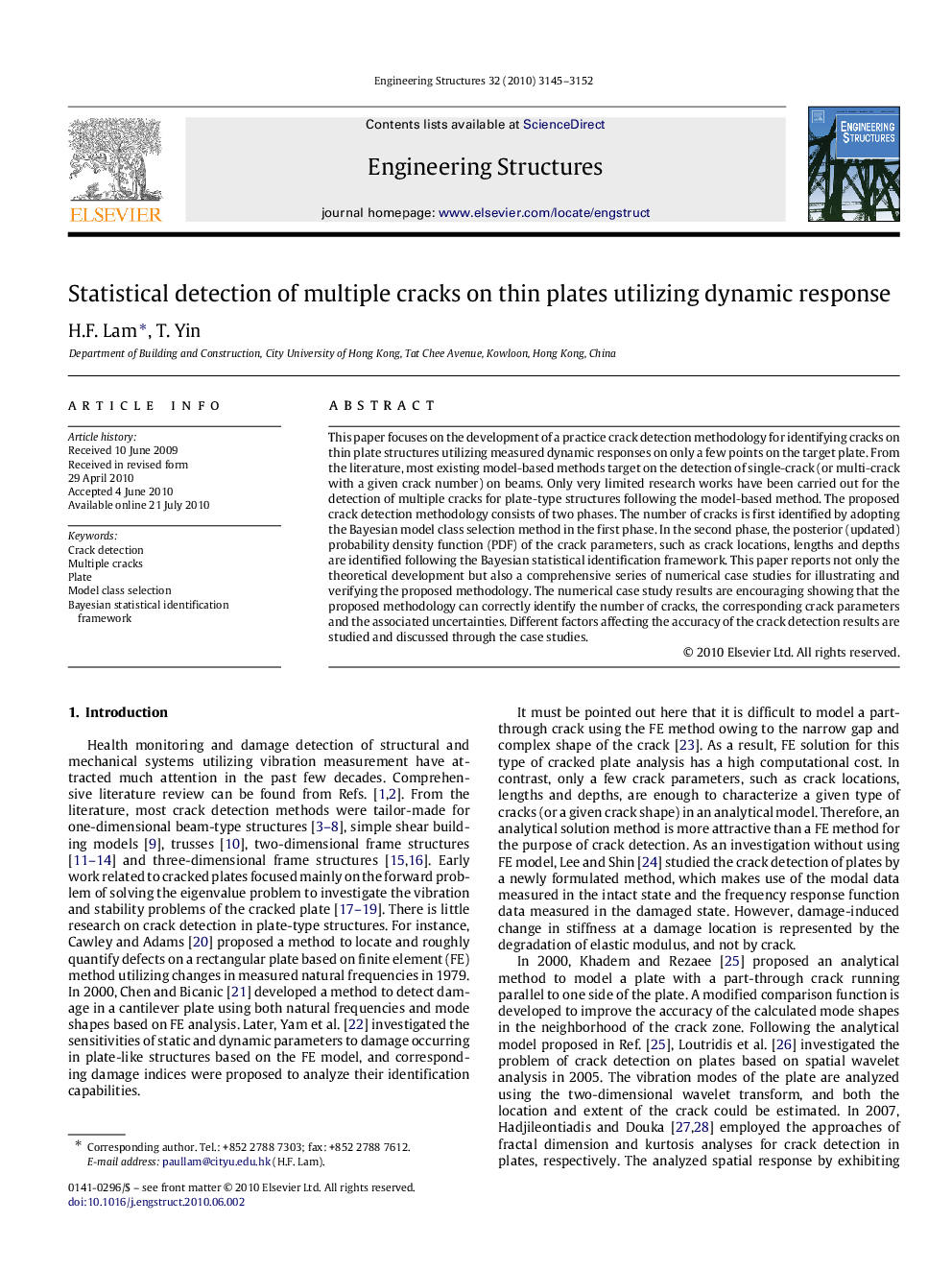| Article ID | Journal | Published Year | Pages | File Type |
|---|---|---|---|---|
| 268097 | Engineering Structures | 2010 | 8 Pages |
This paper focuses on the development of a practice crack detection methodology for identifying cracks on thin plate structures utilizing measured dynamic responses on only a few points on the target plate. From the literature, most existing model-based methods target on the detection of single-crack (or multi-crack with a given crack number) on beams. Only very limited research works have been carried out for the detection of multiple cracks for plate-type structures following the model-based method. The proposed crack detection methodology consists of two phases. The number of cracks is first identified by adopting the Bayesian model class selection method in the first phase. In the second phase, the posterior (updated) probability density function (PDF) of the crack parameters, such as crack locations, lengths and depths are identified following the Bayesian statistical identification framework. This paper reports not only the theoretical development but also a comprehensive series of numerical case studies for illustrating and verifying the proposed methodology. The numerical case study results are encouraging showing that the proposed methodology can correctly identify the number of cracks, the corresponding crack parameters and the associated uncertainties. Different factors affecting the accuracy of the crack detection results are studied and discussed through the case studies.
